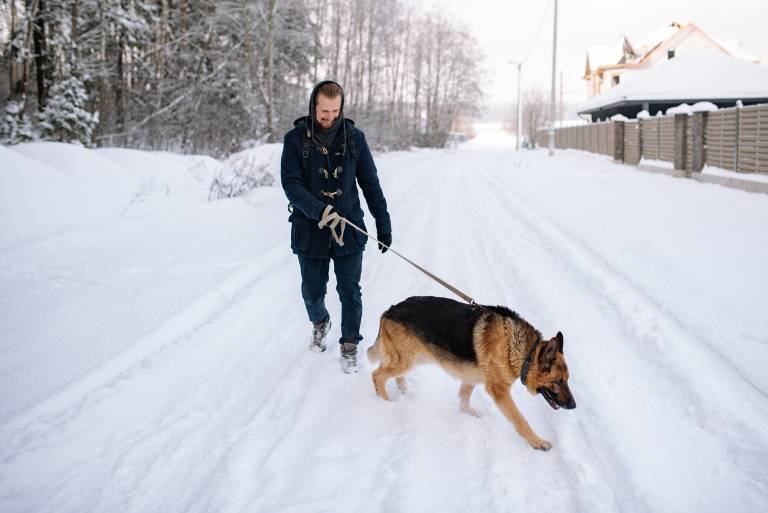How To Adopt One Of The 4000 Beagles?
Post Date:
December 10, 2024
(Date Last Modified: November 13, 2025)
Adopting a relocated beagle from a large-scale transfer effort takes coordination, preparation, and realistic expectations about health and behavior.
Background: the 4,000 Beagles and why they need homes
Approximately 4,000 beagles were identified for relocation after regulatory oversight and enforcement actions at a single breeding facility, creating an unusually large intake need for rescues and shelters nationwide[1].
The enforcement and transfer timeline began with regulatory findings that culminated in formal transfer or seizure orders issued in 2022, which set into motion intake planning, transport logistics, and veterinary triage across multiple partner organizations[2].
Coordination for placement leaned heavily on established rescue networks: more than 30 independent rescue groups and municipal shelters signed up as intake partners or coordinated foster capacity to handle the influx of animals[3].
To maximize placement success and limit cross-regional disease risk, transfers and intake were staged across at least 20 states, with many animals routed to local partners for medical assessment and community rehoming efforts rather than long-distance private adoptions immediately upon arrival[4].
Because animals arriving from high-density breeding facilities commonly require immediate triage, partners advised completing a full veterinary intake and basic medical triage within 72 hours of transfer, including a physical exam, parasite control, and a plan for any urgent procedures[5].
Who should consider adopting
Beagles are a scent-driven hound breed that typically weigh 20–30 lb (9–14 kg) at maturity and are best matched with owners who can tolerate regular tracking and scent-driven escapes rather than primarily couch-potato households[6].
Because beagles were bred to work and follow scent, a reasonable activity baseline is about 45–60 minutes of focused exercise or enrichment per day, split between walks, scent games, and play to reduce boredom-related behaviors[7].
Suitability also depends on household composition: many beagles do well with children who are older than small toddlers and who understand gentle handling, and they commonly coexist with other dogs when introduced carefully; however, potential adopters should expect a settling period that can last several weeks as animals decompress from shelter conditions and learn home routines[6].
Eligibility and application requirements
Agencies involved in mass rehoming typically require an adult applicant; a common minimum age requirement is 21 years old, with government-issued photo ID required at application or pickup[8].
Standard documentation requests often include proof of residency or landlord approval for renters, a copy of current pet vaccination records if the household has animals, and two personal references or a veterinary reference to confirm prior pet care experience[8].
Screening steps usually consist of an online application, a phone interview, and—when resources allow—a scheduled home visit; common disqualifiers are unapproved housing situations, a history of animal neglect, or inability to provide required identification and landlord consent[8].
Step-by-step adoption process
Initial registration of interest is generally done through a central intake portal or through partner rescues; during high-volume events expect intake lists and waitlists to move in batches rather than on a first-come-first-served single-animal basis, and placements may take 3–6 weeks from first inquiry to final adoption paperwork for large transfers as animals are medically triaged and matched to adopters[8].
After an application is accepted, typical approval stages include a telephone interview, verification of references, an optional virtual or in-person home check, and a signed adoption contract; adoption deposits in these contexts commonly range from $100–$300 to hold an animal while medical clearance and transfer logistics are finalized[9].
Many organizations offer a trial or foster-to-adopt period that lasts 7–14 days so families can confirm the match before finalizing ownership and completing any remaining paperwork or fee adjustments[8].
Preparing your home and family
Prepare essential supplies before arrival and establish a quiet, low-traffic recovery area where the dog can rest and adjust; recommended crate sizing for adult beagles is typically 24–30 in (61–76 cm) depending on the dog’s measurements, with a sturdy latch and comfortable bedding[7].
Other essential items to have on hand include a 6-ft leash, an adjustable collar with ID tag, two stainless-steel food and water bowls, a durable harness for walks, and food appropriate for the dog’s age and condition; bring any paperwork provided at pickup to your first veterinary visit so records can be transferred promptly[6].
- Crate (24–30 in / 61–76 cm) and bedding[7]
- 6-ft leash, harness, and collar with ID tag[6]
- Food measured by weight or cup per feeding (see vet for rationing)[9]
- Waste bags, grooming brush, and safe chew/enrichment toys[7]
Dog-proofing should include secure trash, blocked access to small gaps where a beagle might wedge through, and verification that fencing is solid and extends to the ground; discuss safe introduction plans with children and other pets ahead of time and keep first meetings calm and supervised[6].
Transport, pickup, and transfer logistics
Transport for mass rehoming events is often organized as regional distribution: many intake partners operate pickup hubs or coordinate ground transport so adopters usually collect dogs locally rather than arranging long private transports, and some transfer legs may involve carriers that limit capacity based on crate size and route scheduling[4].
Pickup appointments are normally scheduled in blocks to allow medical teams to finalize intake exams; adopters should expect to present identification and their signed adoption contract at pickup and to receive any available medical records at handover[8].
When interstate travel is required, be aware that some jurisdictions expect a short hold or quarantine period for intake animals—commonly 7–10 days for observation after transfer for disease monitoring—so adopters arranging long-distance transport should coordinate timing with intake partners and their veterinarian[5].
Immediate health care and veterinary checklist
Arrange a veterinary appointment within 72 hours of pickup for a full intake exam, parasite screening, and to confirm or begin vaccinations and preventive care; many partners recommend this exam within three days of transfer to catch early issues and transfer medical records promptly[5].
| Intervention | Typical timing | Notes |
|---|---|---|
| Distemper/Parvo (core) | At intake; booster in 2–4 weeks | Core canine vaccine series as indicated by age/previous history |
| Rabies | Given per state law—often at intake if age eligible | Timing may depend on prior records and local regulations |
| Bordetella/kennel cough | At intake or prior to transport | Recommended when group housing or transport is involved |
| Deworming | At intake and repeated per fecal results | Common routine to address intestinal parasites |
Standard intake protocols typically include deworming at intake and a plan for recheck fecal testing; core vaccine schedules commonly require boosters at 2–4 weeks after the initial dose when the dog’s immune status is unknown[6].
Confirm spay/neuter status and microchip information at the first visit; if the dog is not yet sterilized, many partners schedule spay/neuter within 2–8 weeks after placement depending on medical suitability and recovery plans[9].
Behavior, socialization, and training plan
Beagles commonly show strong food drive, scent focus, and a propensity to vocalize; expect typical adjustment behaviors such as reduced appetite, nervous pacing, and increased baying or barking for the first 2–6 weeks as the dog acclimates to new routines[6].
A practical first-month training roadmap is phased by weeks: week 1 emphasizes a calm recovery period and basic handling, week 2 introduces short crate and house-training sessions, week 3 builds leash skills and recall with high-value food rewards, and week 4 begins consistent reinforcement of sit/stay and emergency recall[7].
For crate work, plan for multiple short sessions of 10–15 minutes throughout the day and reward calm behavior; if sound sensitivity, resource guarding, or persistent separation anxiety continues beyond 8 weeks, seek a qualified certified trainer or veterinary behaviorist for a tailored plan[7].
Costs, commitment, and long-term care
Adoption fees in mass rehoming efforts are often reduced or waived, but when charged they commonly range from $50–$300 to offset intake costs and initial medical care[9].
Initial medical costs after adoption—covering the first exam, any additional vaccinations, and elective or urgent procedures—can typically range from $200–$800 depending on the dog’s health needs; expect ongoing monthly costs for food, routine preventives, and basic care of roughly $50–$100 per month, excluding emergency or specialty care[6].
Adopting a beagle is a multi-year commitment: life expectancy is commonly 12–15 years, so families should have contingency plans for moving, long-term travel, or emergency rehoming well in advance if circumstances change[6].






